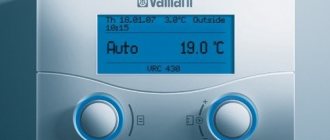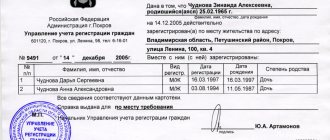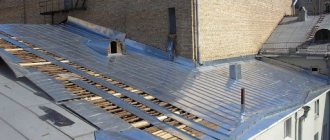As soon as the temperature drops by at least 10 degrees in the fall after the heat subsides, the apartments of many residents become cold. At this time, many people heat themselves with electrical appliances and activate air conditioners in heating mode. At the same time, everyone wants to know when the heating will be turned on.
Many citizens do not trust utility services and believe that they are deliberately trying to delay the heating season in order to save money. However, there are clear regulations that determine when the heating should be turned on.
Start of the heating season
To dispel the doubts of many citizens, it is enough to simply refer to Government Resolution No. 354 of 05/06/2011. This Resolution states (in paragraph 5) that the beginning of the heating season is determined by two factors:
- The air temperature outside drops below +8 degrees.
- This temperature lasts for at least five days.
If these conditions are met, and the temperature for five days is at +7 degrees, then on the next (sixth) day the radiators in people’s homes should be warm. By law, the heating season begins between October 1 and October 15. Unscheduled heating activation is possible if the above conditions are met. However, even if after October 15 the air temperature outside is about 10 degrees, the timing of heat supply to citizens’ homes may be delayed, so it is better not to rely on dates. It is necessary to take into account the average daily air temperature outside, which lasts for five days.
First frosts
Russia is a huge country. And the weather in different parts of it is ambiguous. But in general, the changes are happening very abruptly - yesterday it was hot, and today it’s raining and cold. This is why people ask when the heating will be turned on in their apartment. After all, the low temperature outside the window seriously affects the climate in residential buildings and the temperature in the premises.
Don’t think that with the first cold days the radiators in the house will become hot. And that the next day they will be turned on - too. In Russia there is a law according to which the beginning of the heating season in the country is determined.
This means that certain rules must be followed. When is heating turned on in apartments by law? You need to look at the “Rules for the provision of public utilities” dated May 6, 2011. This is where you can find the answer to the question posed.
According to established rules, the heating season in the region begins after the outside temperature reaches +8 degrees and lasts for 5 days. From now on, the batteries in the house should become hot. Accordingly, if the weather has changed dramatically, but the average temperature still remains above 8 degrees Celsius, you should not hope for the start of the heating season.
Heating under contract
If residents are not satisfied with the conditions or time when the heating will be turned on, then they can draw up an agreement with the organization that services their home and supplies heat. The contract can specify a specific start and end date for the heating season. Then heat will be supplied to houses strictly according to the dates specified in the contract, and the air temperature outside will not matter at all.
However, such an agreement must comply with common sense, and the start and end dates of the heating season must be within reason.
When should heating be turned on in apartments? When will it be warm?
QUESTION:The figures that utility companies report: so many percent of houses are provided with heating - do not tell a specific consumer anything, and besides, it is impossible to check them. When will it be warm?Al-7, 09/18/2014
Edited:
ANSWER:
The procedure for turning on the heat in a particular apartment building at the beginning of the heating season has recently looked something like this (using the example of Izhevsk):
1. The heat supplier - Udmurt Communal Systems LLC - begins to supply coolant, and it reaches your home. But there may still be no heat in the apartments at this stage! Because the management organization (or HOA) must “open the valve” on the house. Every day of heat supply means money, and a lot of it.
2. If there are no complaints from residents to the authorities, or requests from residents to the management company / HOA to turn on the heating, then the house may remain for some time without heat in the apartments. Although the warmth has already been given to the house. In our time, there is no single schedule according to which heating in everyone’s apartments would be turned on centrally at a predetermined time. Deadline (normative) period for turning on heating in apartments
, which is followed by management companies / homeowners associations - this is
the 5th day from the beginning of the establishment of the average daily outside air temperature of plus 8 and below degrees Celsius
(clause 4.8. SNiP 2.04.07.86 * “Heating networks”).
3. The management company / HOA “opens the valve” and heat begins to flow into the apartments. This is preceded by a lot of preparatory work by the management company / HOA, which, according to the rules, should be carried out in advance of the heating season, in the summer. This is the preparation of the general heating system for winter with its subsequent pressure testing.
Figures used by utility companies: so many percent of houses are provided with heating
— they don’t tell a specific consumer anything, and besides, it’s impossible to verify them. In fact, all that remains is to look at the thermometer, follow the reports of the Hydrometeorological Center (official data on the average daily outside air temperature) and wait for the deadline (see paragraph 2).
For reference. Excerpt from the Rules for the Provision of Public Utilities:
5. If thermal energy for space heating needs is supplied to in-house engineering systems via centralized
engineering support networks, then the contractor begins and ends the heating period within the time limits established by the authorized body.
The heating period must begin or end on the day following the end of the 5-day period during which, respectively, the average daily outside air temperature is below 8 degrees Celsius or the average daily outside air temperature is above 8 degrees Celsius.
If, in the absence of a centralized heating supply (the case is described with autonomous heating of a separate house from its own boiler room - editor's note)production and provision by the contractor of communal heating services are carried out using equipment that is part of the common property of the owners of premises in an apartment building, then the conditions for determining the start and (or) end date of the heating period and (or) the start and (or) end date of the heating period are established by the decision of the owners of premises in an apartment building or the owners of residential buildings. If such a decision is not made by the owners of premises in an apartment building or the owners of residential buildings, the heating period begins and ends at the start and end dates of the heating period established by the authorized body when thermal energy is supplied for the needs of heating the premises to the intra-building engineering systems through centralized networks of engineering support.
And here is the point of view of the resource supply organization.
See the material: “When should you turn on the heating in residential buildings in Izhevsk? Comments from the heat energy supplier." Site support
Normal temperature in the house
Many residents demand that utility companies start the heating season, despite the fact that the air temperature in their apartments is normal. In this regard, citizens want to know at what temperature the heating is turned on in their apartments. SANPiN 2.1.2.1002-00 specifies the permissible temperature range in apartments for the cold and warm seasons. Compliance with the temperature ranges specified in SANPiN is a mandatory condition for home service companies, and if the temperature does not meet the standards, then you can file a complaint (we’ll talk about this below).
In accordance with the standards, the temperature in the warm season is 20-28 degrees for rooms. In cold weather:
- 18-24 degrees for rooms.
- 18-26 degrees for the kitchen, bathroom, toilet.
In addition to the permissible temperature, the optimal temperature range is also determined. These two concepts are different from each other. Acceptable is a temperature that does not contradict the rules. The optimal temperature is one that is close to the ideal value. With it, residents feel as comfortable as possible, so they are recommended to insulate the facades and do everything possible to maintain the optimal temperature in the apartment.
It is believed that the optimal value for rooms is 22-25 degrees in warm weather. In cold weather, the range of optimal values is lower – 20-22 degrees. In the toilet, bathroom, and kitchen, the optimal temperature is 19-21 degrees. It is these indicators that must be taken into account when determining compliance with air temperature standards in residential premises. We have almost figured out at what temperature the heating is turned on in apartments. But what if the utilities fail for any reason? You don’t have to suffer in a cold apartment if you suddenly don’t turn on the heating. Where to complain and what to do in this case?
What should the temperature standards be?
The operation of heating systems is regulated by GOST 30494 “Indoor microclimate parameters”.
First of all, the temperature should be comfortable for citizens living in the apartment. If the cold persists outside for five days in a row, heating begins.
In general, the norm for living rooms is 20 - 22 degrees. It should be noted that in different rooms the air heats up at different speeds and intensity.
Much depends on the presence of windows and doors, cracks in the walls and the position of the premises.
In kindergarten
For kindergartens, certain heating standards apply:
| For game rooms | Not lower than 21 degrees. Recommended value – 24C |
| Sleeping quarters | 18 – 22 degrees |
These indicators are valid for those regions of the country in which the average January temperature is no more than - 14 C.
Points to consider:
| Both too low and high temperatures are not allowed | They can do more harm than good. From the established norms of 20 -24 degrees, a deviation of no more than 2-3C is allowed downward or upward |
| In addition to the heating mode, it is imperative to comply with air humidity standards | This figure should be between 40 and 50%. Special, complex instruments are used to measure data. This is the reason why humidity testing is not carried out properly and the air is too dry. This, in turn, is the reason for the increase in morbidity rates among children, especially respiratory tract diseases. To maintain optimal humidity levels, you need to regularly check and ventilate the premises in the kindergarten. |
Monitoring the temperature in kindergartens and other institutions where minors and preschoolers are often present is very important.
School
In school premises - classrooms, gyms, canteens, as well as in kindergartens, it is important to maintain a certain temperature regime.
The warmest rooms - classrooms - should be heated at no less than 20-22 degrees.
At the same time, it is important not to exceed this figure, since too high a temperature leads to increased dryness of the air, which helps to weaken the concentration of schoolchildren.
Other school premises:
| Gym | 16 – 18C |
| Common corridor | 18 – 19C |
| Toilets | 16 – 18C |
| Teachers' offices | 18 – 20C |
The use of stove or electric heating in school premises is not permitted.
Apartment
According to the GOST standard, certain temperature standards are established for residential and non-residential premises in apartments and apartment buildings:
| Bedrooms, living rooms | 20 - 22 C. 18 degrees is allowed |
| Kitchen | The most optimal temperature is 23C, but perhaps 20 degrees |
| Toilet room | From 18 to 21C. The indicators may be influenced by the location - in the central rooms, as a rule, it is warmer than in the corner ones |
| Bathroom | 23 – 26 degrees |
| Workrooms, recreation and leisure areas | 20 – 22 degrees |
| Corridor in the apartment | 18C. Allowed indicator is 16C |
| Staircases in apartment buildings, lobbies and halls | From 12 to 18 degrees |
| Technical rooms, control rooms, storerooms, basement rooms | 16 – 18 degrees, but 14C is allowed |
Before submitting an application to the state regulatory organization, you need to take correct measurements.
The measuring device should not be placed too close to the floor, walls, windows or ceiling. It is very important to get the correct data before a specialist arrives at your home.
If heat is not provided for a long time
In many regions, for any reason, heat may not be provided even after the onset of the heating season in all respects. In some cases, the heat supply stops altogether at the very peak of cold weather. Therefore, every tenant should know what to do if the heating is not turned on, where to complain, and most importantly, how.
So, first of all, you need to contact a company that supplies heat specifically to your home. This could be a homeowners association or a management company. Before contacting, you should make sure that the heating equipment is in working order. Considering that there is practically nothing to break in the batteries, you can skip this step and immediately proceed to report the lack of heat to the responsible company.
Filing a complaint
Alternatively, you can call a company representative and measure the temperature in the house in his presence using a regular thermometer. It is advisable to take measurements in each room, and if the readings do not fit into the permissible temperature range, then a report can be drawn up about the unacceptably low temperature. Further, with the attachment of this act, a complaint is filed against the management company, which is responsible for supplying heat to the house.
It is worth paying attention to the fact that a company representative can use his own thermometer to measure the temperature. It is necessary to ensure that the measurement is carried out at a distance of 1.5 meters from the floor and 1 m from the wall. If the thermometer readings seem suspiciously high, you can take measurements in parallel with your thermometer.
It is advisable to draw up the act that is attached to the complaint in the presence of neighbors. Let them also put their signatures under it. The complaint to the responsible organization must be submitted in two copies, one copy must be kept for yourself. The company representative must also sign two copies.
For each hour that the temperature does not meet the standards, the payment for heating is reduced by 0.15% of the payment (monthly). So it is in the interests of the management company itself to arrange heat supplies to the house as soon as possible.
When is the law not on the tenants' side?
It is worth noting that the law provides for emergency situations that may occur when setting up heating equipment in a boiler room. “Downtime” is possible for 24 hours (for a month in total) with a minimum temperature in the apartment of +12 degrees. If the thermometer drops to +10 degrees, then “downtime” is possible for no more than 8 hours per month. There may be no heating for 4 hours a month at temperatures below +8 degrees in the room.
These are the norms provided by law. And if during the course of a month residents experience frequent interruptions in the heat supply, then they definitely need to respond.
Is heating possible “with your own hands”?
Many residents cannot wait for the heating to be turned on. They try to independently adjust the heat supply to their home in different ways. Someone is digesting the pipe system, and someone is trying to connect it to the power supply.
Situations also often arise when residents replace indoor radiators with multi-section ones. This helps to insulate the room, but the rest of the residents suffer from this, since excess heat remains in the apartment of the person who installed the multi-section radiator.
Sooner or later, such interference will become known to the relevant services, and then the violator will face a substantial fine.
Similar materials on the company website
Technical characteristics of E-35-2.4-300KB (E-35-2.4-300DVU) Type: Steam boiler Fuel: coal Nominal steam production,…
With external thread, for connecting metal-plastic pipes in heating systems and…
DESIGN PRESTIGE LLC Heating water supply boiler room 8(495)744-67-74 Heating repair Water supply repair…
When will the heating be turned on in the apartments? Laws and plan for turning on the heating.
With the onset of the first cool weather, many residents are interested in when the heating will be turned on in their apartments. This topic is starting to worry everyone. Especially if cold or frost came unexpectedly. In Russia there are certain rules that you have to adhere to. In this regard, there is often dissatisfaction on the part of the population. What should citizens know about the heating season in Russia? When do batteries turn on in houses? Are there any restrictions on this? We will have to understand all this further.








